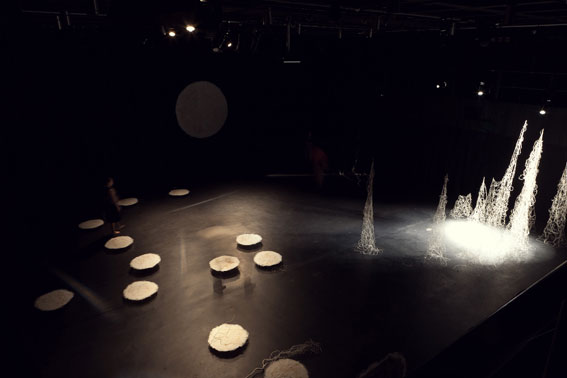Ocean White is a collaborative visual-sound-lighting installation performance with the international collaborator Genta Iwamura who is the lighting designer for acclaimed Butoh dance company Sankaijuku since 1990 and is highly-experienced in design for performance and installation projects.
The project explored two spatial concepts. They are notions of 'Yohaku-no-bi' (Japanese term: literally translated as beauty of extra white) and 'pathway'. Yohaku-no-bi, in the sense of 'open space' which focuses on what is left out of a design rather than what is put in. The aesthetics of yohaku (extra white, white space) is often associated with the concept of 'emptiness ' or 'nothingness' of Zen philosophy and it is visualised in Zen garden for meditation purposes.
However what we emphasise here is a new perspective of Yohaku-no-bi generated by Naomi's research in Okinawa. Utaki (Sacred grove: also called 'on') in Taketomi island is non-decorative and empty, but a powerful and sublime space. While Zen gardens such as Karesansui (literally, 'dry landscape') are precisely designed, with a solemn atmosphere suggesting a resolute attitude, the open space of Utaki exists as very carefree, and fits comfortably within people's everyday lives.
Some pathways on the island act as a guide to the Utaki space. Utaki is naturally found by following those attractive pathways. The concept of pathway in the project will be interpreted as a transformative element leading audiences into open white space.
White here represents open space but also includes colour of white. One side of Taketomi's seashore is covered by coral bones, dazzling white under the tropical sunshine. The variety in the details of those corals gave an impression of rich whiteness and feeling of stillness. That could be from the factor of coral's nature of 'slow-growing'. (The slow-growing species grows only between 2 and 6 mm/year. The corals provide multi-century records.) The notion of stillness will be also experimented with as an element of the Ocean white project.






